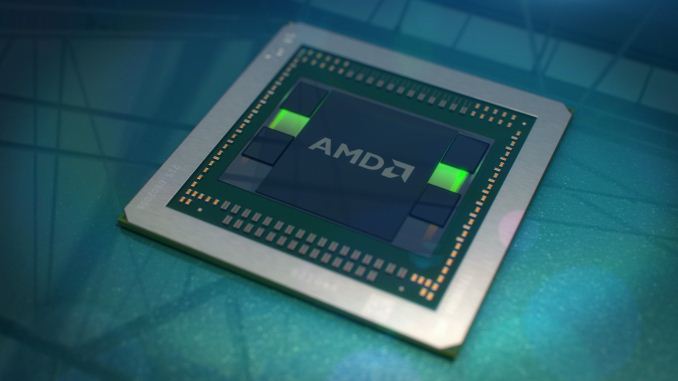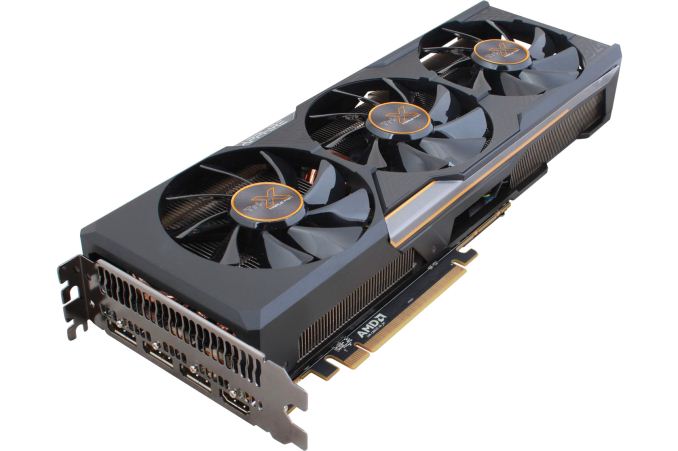The AMD Radeon R9 Fury Review, Feat. Sapphire & ASUS
by Ryan Smith on July 10, 2015 9:00 AM ESTFinal Words
Bringing this video card review to a close, we’ll start off with how the R9 Fury compares to its bigger sibling, the R9 Fury X. Although looking at the bare specifications of the two cards would suggest they’d be fairly far apart in performance, this is not what we have found. Between 4K and 1440p the R9 Fury’s performance deficit is only 7-8%, noticeably less than what we’d expect given the number of disabled CUs.
In fact a significant amount of the performance gap appears to be from the reduction in clockspeed, and not the number of CUs. And while overclocking back to R9 Fury X clockspeeds can’t recover all of the performance, it recovers a lot of it. This implies that Fiji on the whole is overweight on shading/texturing resources, as it’s not greatly impacted by having some of those resources cut off.
Consequently I can see why AMD opted to launch the R9 Fury X and R9 Fury separately, and to withhold the latter’s specifications until now, as this level of performance makes R9 Fury a bit of a spoiler for R9 Fury X. 7-8% makes R9 Fury notably slower than R9 Fury X, but it’s also $100 cheaper, or to turn this argument on its head, the last 10% or so that the R9 Fury X offers comes at quite the price premium. This arguably makes the R9 Fury the better value, and not that we’re complaining, but it does put AMD in an awkward spot.
As for the competition, that’s a bit more of a mixed bag. R9 Fury X had to compete with GTX 980 Ti but couldn’t surpass it, which hurt it and make the GTX the safer buy. On the other hand R9 Fury needs to compete with just the older GTX 980, and while it’s by no means a clean sweep for AMD, it’s a good outcome for AMD. The R9 Fury offers between 8% and 17% better performance than the GTX 980, depending on if we’re looking at 1440p or 4K. I don’t believe the R9 Fury is a great 4K card – if you really want 4K, you really need more rendering power at this time – but even at 1440p this is a solid performance lead.
Along with a performance advantage, the GTX 980 is also better competition for the R9 Fury (and Fiji in general) since the GTX 980 is only available with 4GB of VRAM. This negates the Fiji GPU’s 4GB HBM limit, which is one of the things that held back the R9 Fury X against the GTX 980 Ti. As a result there are fewer factors to consider, and in a straight-up performance shootout with the GTX 980 the R9 Fury is 10% more expensive for 8%+ better performance. This doesn’t make either card a notably better value, but makes the R9 Fury a very reasonable alternative to the GTX 980 on a price/performance basis.
The one area where the R9 Fury struggles however is power efficiency. GTX 980’s power efficiency is practically legendary at this point; R9 Fury’s is not. Even the lower power of our two R9 Fury cards, the ASUS STRIX, can’t come close to GTX 980’s efficiency. And that’s really all there is to that. If energy efficiency doesn’t matter to you then the R9 Fury’s performance is competitive, otherwise GTX 980 is a bit slower, a bit cheaper, and uses a lot less power. That said, AMD’s partners do deserve some credit for keeping their acoustics well under control despite the high power and heat load. It’s not an apples-to-apples comparison against the reference GTX 980 and its blower, but at the very least picking R9 Fury over GTX 980 doesn’t mean you have to pick a loud card as well.
And that brings us to the third aspect of this review, which is comparing the R9 Fury cards from Sapphire and ASUS. Both partners have come to the plate with some very good open air cooled designs, and while it’s a bit unusual for AMD to launch with so few partners, what those partners have put together certainly paint R9 Fury in a positive light.
Picking between the two ends up being a harder task than we expected, in part because of how different they are at times. From a performance perspective the two cards offer very similar performance, with Sapphire’s mild factory overclock giving them only the slightest of edges, which is more or less what we expected.
However the power and acoustics situation is very different. On its own the ASUS STRIX’s acoustics would look good, but compared to the Sapphire Tri-X’s deliciously absurd acoustics it’s the clear runner-up. On the other hand the ASUS card has a clear power efficiency advantage of its own, but I’m not convinced that this isn’t just a byproduct of the ASUS card randomly receiving a better chip. As a result I’m not convinced that this same efficiency advantage exists between all ASUS and Sapphire cards; ASUS’s higher voltage R9 Fury chips have to go somewhere.
In any case, both are solid cards, but if we have to issue a recommendation then it’s hard to argue with the Sapphire Tri-X’s pricing and acoustics right now. It’s the quietest of the R9 Fury cards, and it’s slightly cheaper as well. Otherwise ASUS’s strengths lie more on their included software and their reputation for support than in their outright performance in our benchmark suite.
And with that, we wrap up our review of the second product in AMD’s four Fiji launches. The R9 Fury was the last product with a scheduled launch date, however AMD has previously told us that the R9 Nano will launch this summer, meaning we should expect it in the next couple of months. With a focus on size and efficiency the R9 Nano should be a very different card from the R9 Fury and R9 Fury X, which makes us curious to see just what AMD can pull off when optimizing for efficiency over absolute performance. But that will be a question for another day.












288 Comments
View All Comments
Sefem - Wednesday, July 15, 2015 - link
"Draw calls are the best metric we have right now to compare AMD Radeon to nVidia ON A LEVEL PLAYING FIELD."Well, lets just for a moment consider this as true (and you should try to explain why :D )
Looking at draw calls a GTX 980 should perform 2.5x faster than a 290X in DX11 (respectively 2.62M vs 1.05M draw calls) and even a GTX 960 would be 2.37x faster than the over mentioned 290X (respectively 2.49M vs 1.05M draw calls) :)
D. Lister - Friday, July 17, 2015 - link
Performing minor optimizations, on an API that isn't even out yet, to give themselves the appearance of a theoretical advantage in some arbitrary GPU function, as a desperate attempt to keep themselves relevant, is so very AMD (their motto should be, "we will take your money now, and give you its worth... later..., maybe.)Meanwhile people at NV are optimizing for the API that is currently actually being used to make games, and raising their stock value and market share while they're at it.
Why wouldn't AMD optimize for DX11, and instead do what it's doing? Because DX11 is a mature API, so any further improvements would be small, yet expensive, while DX12 isn't even out yet, so it would be comparatively cheaper to get bigger gains, and AMD is seriously low on funds.
Realistically, proper DX12 games are stll 2-3 years away. By that time AMD probably wouldn't even be around anymore.
Hence, in conclusion, whatever DX12 performance the Fury trio (or AMD in general) claims, means absolutely nothing at this point.
FlushedBubblyJock - Wednesday, July 15, 2015 - link
Thank GOD for nvidia or amd would have this priced so sky high no one could afford it.Instead of crazy high scalping greedy pricing amd only greeded up on price perf the tiny bit it could since it can't beat nvidia, who saved our wallets again !
THANK YOU NVIDIA ! YOUR COMPETITION HAS KEPT THE GREEDY RED TEAM FROM EXHORBITANT OVERPRICING LIKE THEY DID ON THEIR 290 SERIES !
f0d - Friday, July 10, 2015 - link
i wasnt really impressed with the fury-x at its price point and performancethis normal fury seems a bit better at it price point than the fury-x does
as i write this the information on overclocking wasnt finished - i sure hope the fury overclocks much better than fury-x did because that was a massive letdown when it came to overclocking, when nvidia can get some crazy high overclocks with its maxwell it kinda makex the fury line seem not as good with its meager overclocks the fury-x had
hopefully fury (non x) overclocks like a beast like the nvidia cards do
noladixiebeer - Friday, July 10, 2015 - link
AMD haven't unlocked the voltage yet on Fury X. Hopefully, they will unlock the voltage cap soon, so the Fury X should be able to overclock better. Better than 980ti? We'll see, but Fury X still has lots of uptapped resources.Chaser - Saturday, July 11, 2015 - link
Don't hold you breath. There is very little overhead in Fiji. That's clearly been divulged. As the article states Maxwell is very efficient and has a good deal of room for partners to indulge themselves. Especially the Ti.chrnochime - Friday, July 10, 2015 - link
The WC for the X makes up ~half of the price increase from non-x. For someone who's going to do moderate OC and don't want to bother doing WC conversion the X is a good choice, even over a Ti.cmdrdredd - Friday, July 10, 2015 - link
no it's not...the 980ti bests it handily. It's not a good choice at all when 980ti can overclock as well and many coolers have 0rpm fan modes for when it's at idle or very low usage.akamateau - Tuesday, July 14, 2015 - link
You haven't seen the DX12 Benchmarks yet. Anand has been keeping them from you. Once you see how much Radeon crushes nVidia you would never buy green again.nVidia silicon is RUBBISH with DX12 and Mantle. Radeon 290x is 33% faster than GTX 980Ti.
FlushedBubblyJock - Wednesday, July 15, 2015 - link
sefem already told you..." "Draw calls are the best metric we have right now to compare AMD Radeon to nVidia ON A LEVEL PLAYING FIELD."
Well, lets just for a moment consider this as true (and you should try to explain why :D )
Looking at draw calls a GTX 980 should perform 2.5x faster than a 290X in DX11 (respectively 2.62M vs 1.05M draw calls) and even a GTX 960 would be 2.37x faster than the over mentioned 290X (respectively 2.49M vs 1.05M draw calls) :) "
Now go back to stroking your amd spider platform.